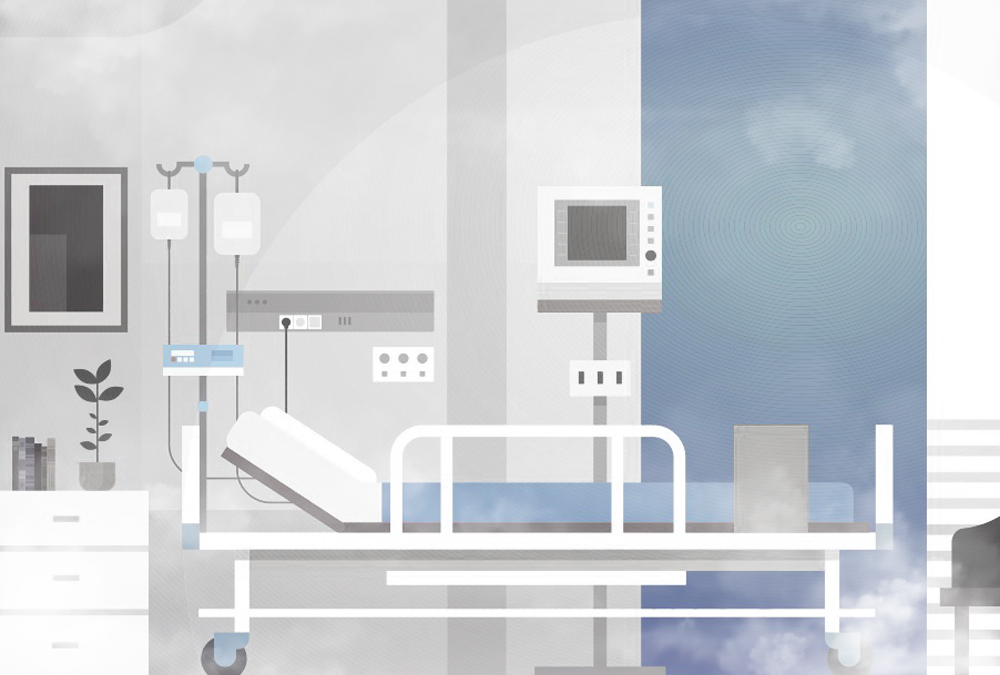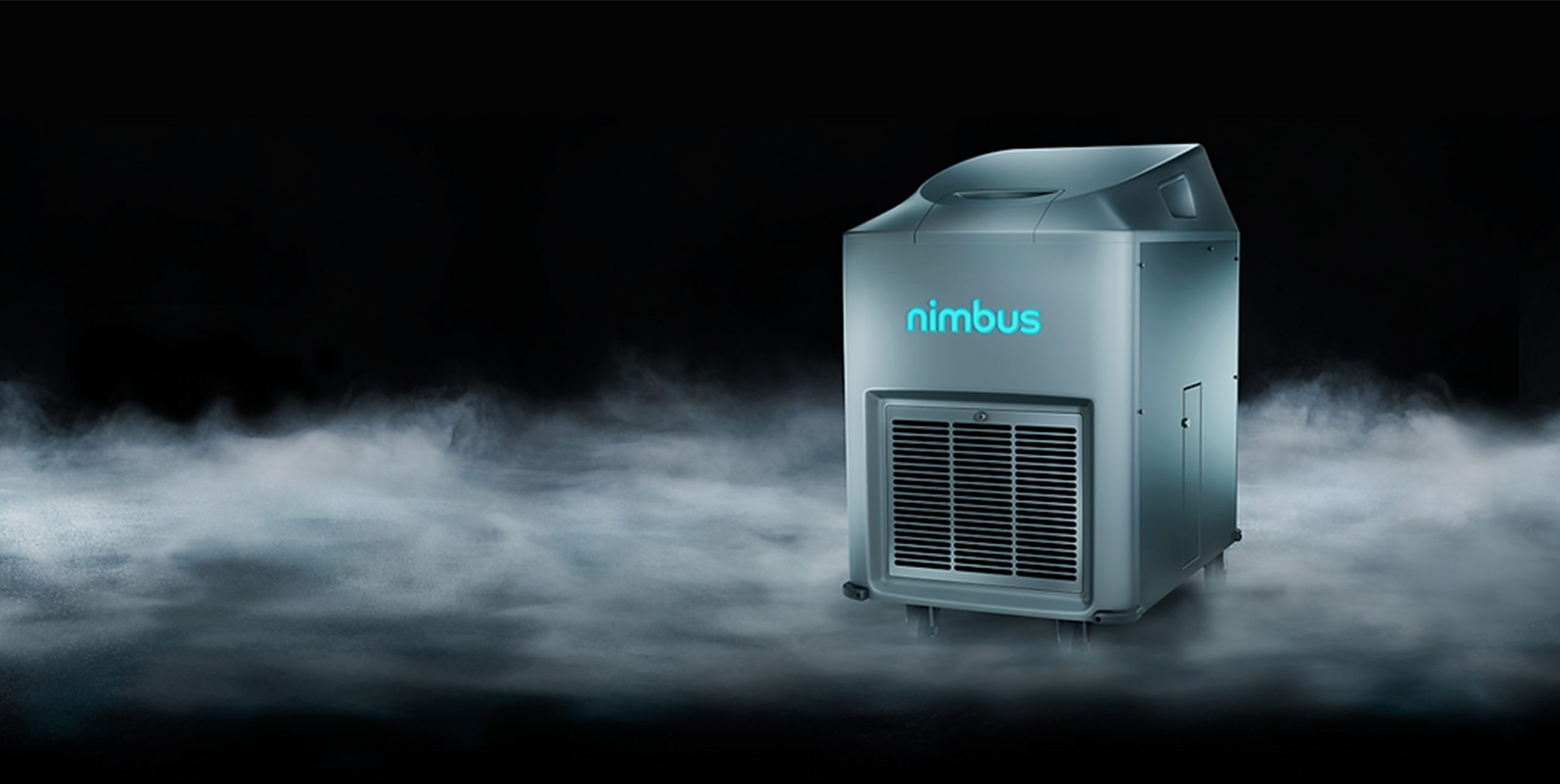In a world where cleanliness and safety have taken center stage, innovative technologies are emerging to meet the escalating demands of hygiene. SterileAware™ provides products that will support the sterile delivery of medical devices to the point of care. We also explore emerging technologies in healthcare packaging, sterile processing, and contamination control.
Among these advancements, Nevoa Inc. stands out with its groundbreaking automated whole-room disinfection system. Harnessing the power of hypochlorous acid, this system redefines disinfection protocols, particularly for high-risk environments.
The Need for Advanced Disinfection Solutions
In today’s global landscape, the significance of robust disinfection protocols cannot be overstated. High-risk environments such as hospitals, clinics, and care facilities face constant challenges in maintaining pathogen-free surroundings. Traditional disinfection methods, while effective to an extent, often fall short of fully eradicating harmful microorganisms. As a result, there is a pressing need for a more efficient and comprehensive solution.
The Challenges of Patient Room Sanitation
Patient room sanitation plays a crucial role in maintaining a healthy healthcare environment. It not only promotes patient safety but also minimizes the risk of healthcare-associated infections. However, it is also one of the more complex tasks that environmental service staff have to undertake. Here are some of the key challenges involved in patient room sanitation:
High patient turnover and time constraints
One of the major challenges in patient room sanitation is the high turnover rate of patients. With limited resources and a continuous influx of new patients, healthcare facilities find it difficult to allocate sufficient time for thorough cleaning. Inadequate time may compromise the quality of sanitation, increasing the risk of cross-contamination.
Complex room layouts and equipment
Many patient rooms are equipped with intricate medical devices and furniture, making cleaning and disinfection processes more challenging. Spaces between equipment, difficult-to-reach corners, and narrow areas can become breeding grounds for pathogens if not adequately cleaned. Moreover, delicate medical equipment requires careful handling to prevent damage during the cleaning process.
Risk of Contamination
Patient rooms have a higher risk of contamination compared to other areas of a hospital or clinic. Patients may be shedding various pathogens as part of their illness or medical treatment. Service workers have to diligently disinfect all high-touch surfaces to prevent the spread of infections. Even a small missed spot can pose risks.
Varied Cleaning Requirements
The cleaning requirements can vary significantly depending on the patient’s diagnosis and treatment. Isolation rooms for patients with highly contagious diseases like C.diff (Clostridium difficile) or MRSA (Methicillin-resistant Staphylococcus aureus) require following strict protocols. Workers have to familiarize themselves with the specific procedures for each type of room.
Changing Regulations and Standards
Infection control guidelines are constantly evolving with new research. Healthcare facilities may adopt enhanced cleaning and disinfection practices. Service workers must keep their training and skills up-to-date to comply with changing regulations and hospital standards.
Compliance and training
Achieving consistent compliance with established sanitation protocols is often a struggle within healthcare facilities. It is vital to ensure that all staff members are well trained, and follow standardized procedures for room sanitation. Regular training and monitoring can help address any deficiencies in techniques or understanding, reducing the risk of oversight in critical cleaning areas.
As you can see, patient room sanitation presents unique logistical and safety challenges. It is a complex job that requires diligence, precision, and constant learning to help reduce hospital-acquired infections. With the New Evolution of Whole Room Disinfection by Nevoa Inc., Nimbus disinfects every surface in the room without missing any spots or allowing pathogen transfer (both of which are big hazards with wipes), allowing hospitals to optimize labor output while maintaining healthcare outcomes.
Introducing Nevoa’s Automated Hypochlorous Acid Disinfection System
Enter Nevoa’s revolutionary automated whole-room disinfection system, a product designed to address these challenges head-on. By harnessing the power of hypochlorous acid, a powerful disinfectant known for its efficacy against a broad spectrum of pathogens, Nevoa’s system is engineered to provide a level of cleanliness and safety that was previously unattainable.
Hypochlorous Acid: Nature’s Defense Mechanism
Hypochlorous acid (HOCl) is a naturally occurring substance that our white blood cells produce to fight off infections. Its ability to destroy harmful pathogens while being safe for humans makes it a remarkable disinfectant. Nevoa’s system generates a fog of hypochlorous acid, which uniformly fills the entire space, effectively reaching every nook and cranny that manual cleaning might miss.
The Power of Automation
What sets Nevoa’s system apart is its fully automated approach. Traditional disinfection methods are often labor-intensive and time-consuming, requiring meticulous manual application. Nevoa’s system eliminates human error and subjectivity by autonomously generating the fog, ensuring consistent coverage and effectiveness. This not only saves time but also reduces the risk of cross-contamination associated with manual cleaning.
Tailored for High-Risk Discharges
Nevoa’s system is specifically designed to address the unique challenges posed by high-risk discharges. Hospitals and healthcare facilities often need to turn over rooms quickly after a patient with an infectious disease is discharged. The automated disinfection process of Nevoa’s system ensures that rooms are thoroughly sanitized, reducing the risk of spreading infections and ensuring the safety of subsequent patients and staff.
Embracing a Safer Future
The Nevoa automated whole-room disinfection system marks a significant leap forward in the realm of hygiene and safety. By harnessing the power of hypochlorous acid and combining it with automation, Nevoa addresses the limitations of traditional disinfection methods, particularly in high-risk environments.
As we continue to navigate a world where health and safety are paramount, embracing innovative solutions like Nevoa’s system becomes essential. With its potential to minimize the risk of infections and enhance the overall cleanliness of shared spaces, this technology can redefine our approach to hygiene and revolutionize the way we safeguard public health.
In a time when the spotlight is firmly fixed on preventing the spread of diseases, Nevoa’s automated hypochlorous acid disinfection system emerges as a beacon of hope, demonstrating the potential for science and technology to create a safer, healthier future for all.
Advantages Beyond Conventional Cleaning
Nevoa’s automated whole-room disinfection system offers a plethora of advantages that extend beyond the limitations of conventional cleaning methods. Let’s delve deeper into the remarkable benefits that set this system apart.
Eco-Friendly Solution
One of the standout features of Nevoa’s system is its eco-friendly nature. Unlike traditional disinfectants that may contain harsh chemicals harmful to both humans and the environment, hypochlorous acid is safe and biodegradable. Nevoa’s system leverages this natural disinfectant, providing an effective yet sustainable solution for maintaining clean spaces.
Enhanced Safety Measures
By eliminating the need for manual labor during the disinfection process, Nevoa’s system enhances the safety of healthcare workers and custodial staff. These individuals are at the forefront of battling infections and need tools that reduce their exposure to potentially harmful environments. The automated nature of Nevoa’s system allows them to work more confidently and efficiently, knowing that the risk of contamination is significantly reduced.
Data-Driven Decision-Making
Nevoa’s system doesn’t just stop at disinfection; it offers a data-driven approach to facility management. Equipped with sensors and data collection capabilities, the system provides real-time insights into the disinfection process. Facility managers can access information about the coverage, duration, and efficacy of each disinfection cycle, enabling them to make informed decisions to optimize the overall hygiene strategy.
Rapid Turnaround
In high-pressure environments like hospitals, time is of the essence. Nevoa’s system accelerates the disinfection process, significantly reducing the turnaround time for preparing rooms for new patients. This swift and efficient approach is particularly crucial during peak periods or when responding to emergencies, ensuring that medical facilities are ready to provide care promptly.
Comprehensive Coverage
Manual cleaning methods can sometimes miss hidden nooks and crevices, leaving areas susceptible to contamination. Nevoa’s automated system tackles this challenge by generating a fine mist of hypochlorous acid that disperses throughout the entire room, reaching every surface—even those that are hard to access. This comprehensive coverage ensures that potential pathogens have nowhere to hide.
Versatility and Adaptability
Nevoa’s system is not limited to healthcare settings alone. Its versatility extends to various industries, including hospitality, education, and transportation. Any environment that requires meticulous disinfection can benefit from the automated power of hypochlorous acid. This adaptability makes Nevoa’s solution a valuable asset for safeguarding a wide range of spaces and industries.
Cost-Efficiency
While investing in advanced technology might raise concerns about costs, Nevoa’s solution offers cost efficiency in the long run. By reducing labor hours needed for manual cleaning and minimizing the risk of infections, healthcare facilities can potentially save on operational expenses and mitigate the financial impact of outbreaks. Additionally, the eco-friendly nature of hypochlorous acid contributes to sustainability efforts.
Public Confidence
In a post-pandemic world, public confidence in the safety of shared spaces is paramount. Nevoa’s system sends a strong message to patients, visitors, and employees alike that every possible measure is being taken to maintain a clean and pathogen-free environment. This assurance can foster trust and contribute to a positive reputation for institutions that prioritize hygiene.
A Step Towards Future Preparedness
The COVID-19 pandemic was a stark reminder of the need for robust hygiene protocols and preparedness for unexpected challenges. Nevoa’s automated hypochlorous acid disinfection system positions healthcare facilities and other high-risk environments at the forefront of infection prevention. By adopting cutting-edge technology, these spaces can ensure they are equipped to handle potential outbreaks while maintaining a high standard of cleanliness.
Changing the Hygiene Landscape
In the rapidly evolving field of disinfection technology, Nevoa’s automated hypochlorous acid disinfection system has emerged as a game-changer. By seamlessly integrating the power of hypochlorous acid with automation, this system offers a comprehensive, efficient, and safe solution to the complex challenges posed by infectious diseases.
About Nevoa, Inc.
Nevoa is an AI and technology company based in Arizona that develops automated disinfection solutions for the healthcare industry. Their flagship product is Nimbus, a fully automated room disinfection robot that uses Nevoa’s proprietary Microburst solution – an EPA-registered hypochlorous acid fogging technology.
Microbursts can reach 100% of the surfaces in a room, including hard-to-reach areas. It offers hospital-grade efficacy against pathogens while being safe enough for immediate room re-entry. Independent testing has shown Nimbus achieves a 4-6 log reduction of various bacteria and viruses like MRSA, C. diff, and norovirus on surfaces using Microburst.
Research has found Nimbus delivers 300 times better disinfection than manual cleaning alone and reduces labor time by 64%, freeing up 30 minutes per room. Nevoa’s mission is to transform outdated manual disinfection practices through automated technology solutions to reduce healthcare-acquired infections.
The leadership team includes experts from medical, technology, and business backgrounds focused on improving patient safety. In a recent podcast hosted by Charlie Webb of the SterileAware Podcast, Peter Hoff, Vice President of Sales at Nevoa, gave insights into their technology. They discussed the value of a whole-room disinfection system for improved patient safety. Peter explained that,
“Nevoa was founded on the belief that technology can help improve healthcare disinfection practices and reduce preventable HAIs. Our automated no-touch systems like Nimbus deliver faster, more consistent disinfection compared to traditional manual cleaning. We’ve also been able to significantly reduce labor hours and costs for our hospital customers while improving patient safety outcomes. I’m excited about the opportunities we have to help transform this important process.
HOCl is a very powerful disinfectant. It works by disrupting the cellular membranes and ribosomes of microbes like bacteria and viruses. Independent testing has shown our Microburst HOCl solution achieves 4-6 log reductions for difficult pathogens like C. diff, MRSA, and norovirus. The automated fogging allows it to coat all surfaces in a room quickly and penetrate shadow areas that can be missed with manual cleaning. This consistent, full-room coverage is the key to our high efficacy.”
As the world continues to grapple with health-related uncertainties, innovative products like Nevoa’s system provide a glimmer of hope. By embracing the potential of science and technology, we can rewrite the rules of hygiene, placing us on a path toward a safer, healthier, and more secure future.
Nevoa’s automated whole-room disinfection system shines as a beacon of progress—a symbol of our collective commitment to safeguarding public health and reshaping the way we approach cleanliness in high-risk environments.





0 Comments